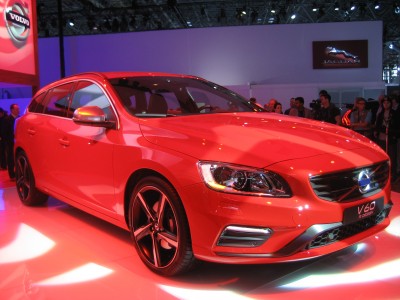Sales of new automobiles increased modestly in March and economists remain optimistic that the upward trend will continue through the rest of the year.
Pickup trucks led sales, with the Ford F-Series remaining the nation’s best selling vehicle having sold about 67,000 units, a 16.3 percent increase over the previous year. Sales of light trucks overall in March, which includes pickups, totaled about 700,000 vehicles, a 9 percent increase over the previous year.
(chart by Andrew Welsch, with data from Ford Motor Company)
These sales are often tied to the housing market, which has been in a slow though continued recovery from the recession. The National Association of Homebuilders reported on Thursday that the number of improving housing markets remained steady at 273, having fallen slightly from 274 the previous month.
Carlos Gomes, an economist at Scotia Bank, said that he expected sales of trucks to stay strong because other economic indicators, such as consumer confidence and durable goods orders, have been improving as well.
“It really highlights that business activity overall is improving in the U.S.,” Gomes said.
Sales were also aided by the high turnover rate of commercial trucks used in the construction industries. Mike Englund, chief economist at Action Economics, said that the average lifespan of a commercial pickup truck is one to two years.
“It’s hard to believe that the value depreciates so quickly, but when you’re doing nothing but drive the truck around all the time, you’re going to wear it out pretty quickly,” said Englund.
Sales of luxury brands also saw significant gains in March. German automaker BMW posted sales of 28,000 automobiles, a 13 percent increase over the previous year, while Volkswagen’s luxury brand Audi sold about 14,000 vehicles, a 14.4 percent increase. Several automakers unveiled new luxury models at the New York Auto Show, a sign that the industry sees room for growth in this part of the market.

Volvo unveils the V60, its new luxury sports wagon, at the New York Auto Show. Photo by Andrew Welsch.
Automakers have also been increasingly turning out more fuel-efficient vehicles, including hybrids and electric cars. Subaru unveiled its first hybrid SUV the XV Crosstrek at the auto show last week.
David Bennet, manager of auto buying services at AAA, said that consumers often look at current gas prices to judge how important efficiency is when they are buying a new car.
“When gas was four dollars a gallon, you couldn’t find a Prius,” he said.
Englund, however, was skeptical that the industry was making a permanent shift to hybrids and electric cars despite the press events like the unveiling of Subaru’s new hybrid.
“Greener technology is cool and carmakers like to get buzz around their cars,” said Englund. He added that the Prius, the best-selling hybrid vehicle, has yet to earn back the money that went into developing it. “It’s a loss leader so the carmakers can make money.”
Despite potential losses on certain models, Englund said he was confident that the overall market would continue to have improving sales and profits because many Americans need to replace their aging cars, having put of new purchases during the recession.
“Automakers can continue to expect growth this cycle,” he said.





